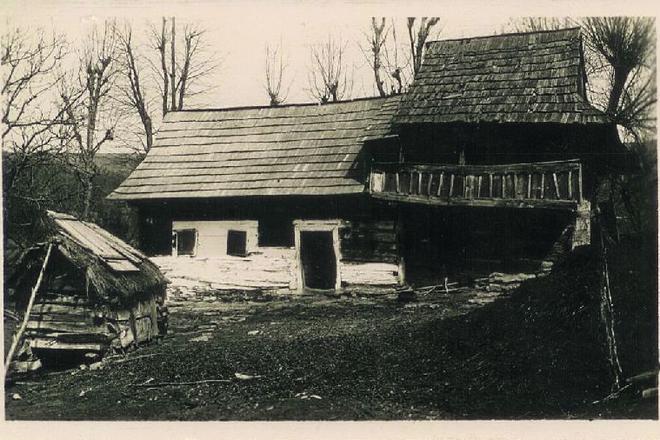IN THIS picture by famous photographer Karel Plicka, we can see outbuildings from Púchovská dolina (the Púchov Valley). This postcard dates back to the 1920s, but the buildings depicted in it are much older; it is possible that they were constructed some time in the second half of the 19th century. For us, the taller building on the right is of interest: this is one of the so-called ‘houses with height’, which were houses with lowered attics that were probably used as granaries.
In southern parts of Slovakia, grain was stored in deep hollows shaped like bottles, covered with a layer of clay. In more northern regions – which included the Mostište settlement in Púchovská dolina – grain for winter was stored in higher spaces, like a ‘house with height’. Grain was stored in a similar way in Bohemia and in some parts of Germany.
Púchovská dolina belonged to the Lednica domain and was characterised by scattered Wallachian settlement. Wallachian settlers probably came from the territory of modern-day Romania and were mainly shepherds and cattle breeders. They managed to preserve this distinctive lifestyle long into the 19th century.


